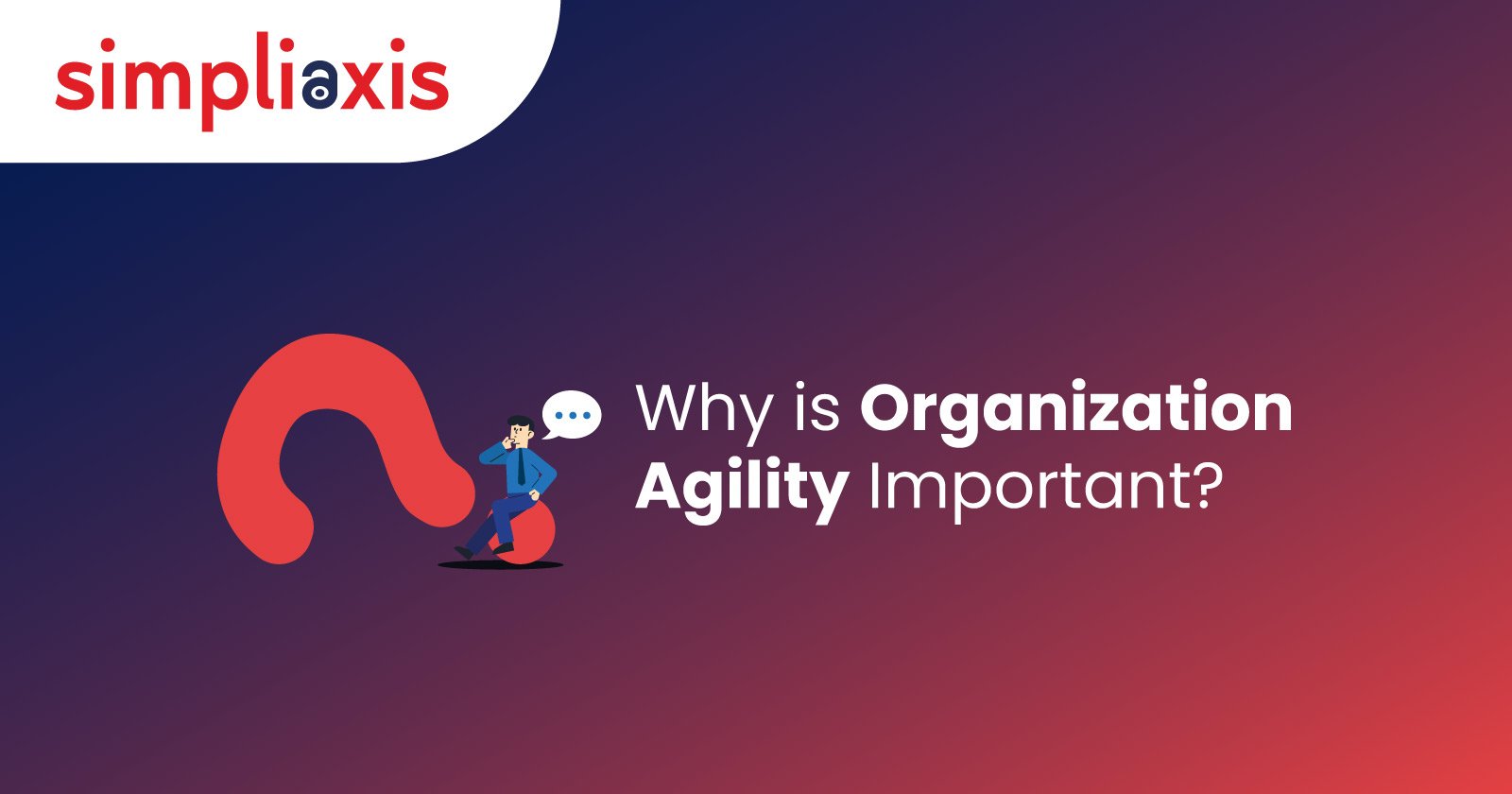Change has been the constant driving factor in the business world since the start of free-market capitalism. However, due to the advent of innovative technologies, the overall pace of change has accelerated in the 21st century. An organization's ability to comply with market changes and thereby quickly adapt to them will be fundamental to its success in the modern world. That's why agility ranks as one of the top factors driving success.
The greater the business's agility, the better the outcomes—such as better customer satisfaction, financial results, strategy implementation, project metrics, and benefits realization.
The Origin of Agility
It should be realized that traditional management models could not meet the standards of software development industry professionals at the time. Dissatisfaction slowed the work process because conventional methods relied on unnecessary and cumbersome steps.
Agile was introduced as a response to static and traditional methods that were prevalent previously. The primary goal of Agile was to increase the interaction between employees within an organization and with clients. Hence, the foundation of Agile management was built to adapt to the customer’s speed, needs, and flexibility. Furthermore, the Agile methodology will always be result-oriented.
What is Organizational Agility?
Organizational Agility can be defined as an organization's ability to adapt, renew, and alter itself quickly to succeed in a rapidly changing, turbulent, and ambiguous environment.
Thus, the more flexible and versatile an organization is, the faster it can adjust to the inevitable industry changes. Hence, the enterprise will be better prepared to obtain market share from its competitors, enhance organizational efficiency, and improve customer loyalty and satisfaction.
Types of Organizational Agility
There are three major types of organizational Agility, and they are as follows:
1. Operational Agility
Operational Agility is a type of Agility that defines an organization's ability to adapt fast to new opportunities, along with the potential to enhance operational efficiency.
2. Portfolio Agility
Portfolio Agility is defined as an organization’s ability to allocate company resources quickly so that the organization as a whole can be improved.
3. Strategic Agility
Strategic Agility is a type of Agility that refers to an organization's ability to quickly adapt to the market and thereby obtain competitive advantages through innovations.
Various Stages of Organizational Agility
- Organizational Agility can be implemented with the help of the following steps:
- Proper evaluation of the current organizational structure & processes.
- Suggestions for improvement of business agility and ways to streamline the entire process pipeline should be provided.
- Product design must be created in collaboration with the client/customer needs.
- Implementation of the product.
- Constant reflection & monitoring.
Why is Organizational Agility important?
Most people tend to associate utilizing Agile management with the software industry because that’s where Agile as a concept was first introduced. Software engineers always look for better products that take less time to reach the market. As a result, the Agile manifesto for Agile software development was created for them, which became the basis for Agile methodology.
Agile generally focuses on the faster development of projects while also maintaining quality. Along with implementing Lean Six Sigma, the focus is on cutting waste while making decisions and keeping the customer's requirements in mind. The good news is that organizational Agility incorporates Agile & Lean Six Sigma features. Thus, organizational Agility is all about flexibility. In an ideal scenario, organizational leaders always keep in touch with the customers' needs while also learning to adapt to changes in the market.
Hence, in the current day and age, Agility is no longer an optional feat to achieve since market trends and customer demands are altering yearly, especially with the ongoing digital transformation accelerating the process. Furthermore, reports suggest that with the emergence of Agile, almost 71 percent of all organizations have reported using Agile in one or more of their projects.
Therefore, the time for change is not three or five years later. Organizations that fail to adapt to the change and only continue to follow traditional approaches tend to perish over time.
Benefits of Organizational Agility
1. Ability to adapt to change
The business world is always changing—most of the time, in a complex manner. Hence, what works today might not work tomorrow. Organizations anticipating incoming alterations can speed up their project management protocols and capitalize on new technologies, trends, and the like. As a result, success comes naturally to these organizations.
The best way to quickly alter & adapt to the changes is to implement organizational Agility so that you can properly prepare your business when the moment comes to make a shift.
2. Quicker delivery
There's no denying that an Agile methodology applied to a development team can easily transform the organization, prioritizing flexibility within the business. Hence, wasted time can be immensely reduced.
3. Increased revenue growth
Organizations that adopt the Agile methodology will often achieve better revenue numbers in the long term. If a company can capitalize on new ideas and trends before the competition, it can quickly release new services and products and obtain new customers with minimal effort.
Moreover, organizational Agility also depends on clear tasks and roles for all company personnel. So, when the organizational team knows what they are required to do, they can perform the same efficiently—ultimately lowering wasted hours and enhancing the business's revenue.
4. Better product quality
Since Agile methodology stresses constant revisions, there will always be an opportunity to change and eliminate errors.
5. Engaged employees
Organizational Agility will lead to more engaged employees. These days, employees want to work for companies that encourage exciting new projects and innovation. Agile businesses generally fall into this category.
Employee engagement is essential in the current workplace climate because turnover is also high. Reports suggest that the average staffer will change jobs more than 12 times throughout his/her career. So, when such employees leave the company, the cost to the company will be 1.5-2 times the average salary of those employees because new employees will demand more.
So, by prioritizing organizational Agility, employee engagement can be increased, and therefore staff turnover can be reduced.
6. Increased client satisfaction
As the Agility organization nurtures a collaborative communication channel, there will be constant feedback. Hence, the client will feel like a part of the team, which will help deliver the ideal product.
7. Innovation
One of the biggest benefits of organizational Agility is innovation. Companies that follow organizational Agility will turn their ability to disrupt markets into a competitive advantage, thereby enjoying long-term sustainability.
Challenges faced by organizations when implementing organizational Agility
The following are some of the major roadblocks faced when implementing organizational Agility:
1. No executive leadership
Without any funding or support from the top levels of an organization, the transformation will not be sustainable. For instance, if one department of an organization adopts organizational Agility but the other departments do not, the entire effort will fizzle out because the concept will not be supported throughout the organization.
2. Avoiding the view of the enterprise
Organizational Agility must be implemented through a formal, centralized program. Otherwise, isolated implementation will occur, leading to additional problems rather than solving the existing issues.
3. Avoiding organizational change
It shouldn't be surprising to learn that Agile will need organizational change – not just in the product development module but in other related areas. For instance, the total number of management layers should be decreased, which means more focus can be exerted on employee training, talent management, performance management processes, and business technology collaboration.
4. Ignoring transitional time
Change takes time. Hence, realistic expectations must be established from the start. Instead of focusing on an all-at-once approach, alterations must be made in waves that slowly break down traditional barriers.
It must be understood that organizational Agility will not happen overnight. Thus, patience must be maintained to switch from traditional methods to the Agile methodology.
Also, Check:
Conclusion
As market conditions continually evolve, new business opportunities are steadily arising. However, there's also an increased rate of uncertainty. Thus, achieving organizational agility is crucial because such a stance will reduce the time needed to market business products/services while also tackling complexity and fostering innovation. Agile organizations can rapidly pivot in response to shifts, enabling them to stay ahead of competitors. This adaptability enhances customer satisfaction, employee engagement, and financial outcomes. In a world of constant change, organizational agility ensures businesses can thrive amidst uncertainty, driving long-term success and sustainability. Embracing agility is no longer optional but essential for survival and growth. Simpliaxis offers comprehensive Agile courses to support this transformation, empowering organizations to develop the skills needed to navigate and excel in today’s dynamic market landscape.






















